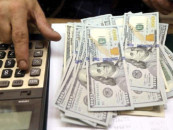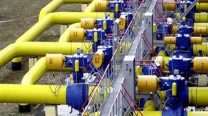Savings: As Pakistanis earn more, households can afford to save less
Financial sector firms offer a wider array of products to customers with more money to invest.

Savings: As Pakistanis earn more, households can afford to save less
Pakistanis are saving less of their incomes today than they did a decade ago, but the total volume of their savings has still increased, resulting in a massive boom in financial services.
This phenomenon is underpinned by a somewhat paradoxical fact: as Pakistani incomes have risen, the average household savings rate has declined, resulting in what is now a very obvious and sustained boom in consumer demand.
According to data compiled from the Household Integrated Economic Survey, compiled by the Pakistan Bureau of Statistics, the average household savings rate in Pakistan went down from nearly 31% of income in 2002 to just over 9.2% in 2011. As with most aggregations, this number hides several important variations.
For the top two income strata, representing about 40% of the population, this decline has been largely due to the fact that they are consuming more. Urban Pakistanis in the top quintile of the population have seen the nominal amount of monthly savings go up by almost 85% between 2002 and 2011, despite the fact that the nominal increase in their incomes during that period was lower, at 68%. In essence, the urban middle class has the best of both worlds: they are saving more and they are consuming more.
The middle three income groups – about 60% of the population – have seen their nominal savings stay flat, even as their incomes have gone up at a pace that is often at par with inflation.
Given the decrease in average household size from almost 7 people per household to just under 6.4, the total number of households has increased, as has the amount available for savings. And that, in large part, has helped a financial sector boom that – but for a brief interruption in 2008 and 2009 – has largely continued unabated.
Deposits at banks have grown at an average annual rate of 15.4% during the decade ending December 31, 2011, reaching over Rs6.3 trillion. Profits at banks, meanwhile, have also soared, reaching a record high of Rs113 billion in 2011. Over the past decade, the sector’s profitability has increased at an average rate of close to 27% per year.
Yet banks are not the only industry that has benefited from the increased ability of the Pakistani middle class to save. The asset management industry in Pakistan was virtually non-existent in 2001. Since then, however, it has soared, currently managing close to Rs313 billion in assets, though that number is down from the 2008 peak.
As they become more affluent, it is becoming increasingly profitable to provide financial services to Pakistanis. Insurance companies now manage approximately Rs502 billion in assets, more than double what they managed just five years ago. Somewhat surprisingly, profitability at insurance companies is down by almost 50%, as many of them ramp up their sales efforts to gain more customers.
And advertising for financial services is now getting more sophisticated and more ambitious. Jubilee Insurance, for instance, seeks to explain the benefit of insurance to the average middle class customer through television, print and outdoor advertisements. Burj Bank has a nationwide television campaign to promote its services. And even asset management companies are taking out front page ads in national newspapers.
Yet despite the recent bonanza, there are many who – far from gaining from the expansion of the financial sector – are rapidly losing the ability to participate in it.
The rupee amount of savings per month in the bottom 20% of rural households dropped 91% during the past decade and it is not hard to see why: while their incomes rose by 7.7% per year during that time, inflation rose at a much faster pace of 10% per year, causing their real incomes to decline. This, in turn, meant that they have less capacity to save. The poor in Pakistan are rapidly losing the ability to build up their own safety net.
Published in The Express Tribune, July 30th, 2012.



















COMMENTS
Comments are moderated and generally will be posted if they are on-topic and not abusive.
For more information, please see our Comments FAQ